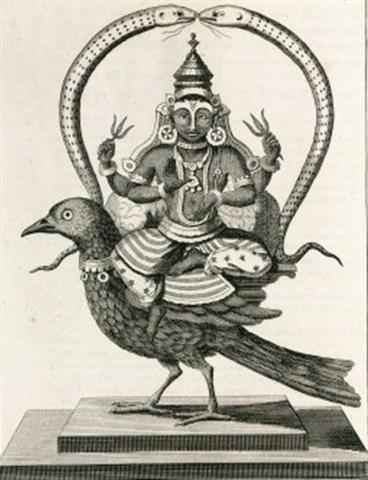|
Once again, Gb4-30 is
close to the end of the 354 days defined by 12 * 29.5, while Gb5-3
is close from the beginning of next season:
|
I have chosen to name the
feathered object up front in Gb5-2 as a 'rib', alluding to how Adam created
Eve from his 'rib'. Maybe Jupiter created Venus from his 'rib':
rib ... any
of the curved bones articulated to the spine ... wife, woman (in allusion to
Gen. ii 21) ... OHG. hirni|reba
brain-pan, cranium, Gr. orophē
roof ... (English Etymology)
Once Eve was created, Adam could
'multiply'. If Adam is Sun (in his Jupiter garment), then Eve will be the
Moon. She determines life and therefore also the time for death, as when
tagata comes in Gb5-6.
With Jupiter as the mask of Sun,
then Venus will be the mask of Moon. Venus has like Moon two phases of
light.
The first of 'a few more pages of
investigation':
|
If we go by the
ordinal numbers counted from Gb1-1, then a 'dark Saturn' cube 5 by 5 by 5
ends with the reversed hau tea at the beginning of line Gb5.
From Jupiter at Gb5-2 Sun possibly will return in a new and better
shape ('recovers from
illness'). A 'midnight henua' should be the beginning of next
'day':
 |
 |
 |
 |
 |
 |
|
Gb5-2 (126) |
Gb5-3 |
Gb5-4 |
Gb5-5 (129) |
Gb5-6 |
Gb5-7 |
According
to Wikipedia the Hindu Saturn, Shani, had bad effects on Sun:
"... It is said
that when Shani opened his eyes as a baby for the very first
time, the sun went into an eclipse, which clearly denotes the impact of
Shani on astrological charts. He is known as the greatest
teacher. Shani deva is said to be very harmful to those who
follow the path of betrayal, backstabbing and unjust revenge. He is
known in Hindu scriptures as the greatest trouble giver as well as the
greatest well wisher. He is depicted dark in colour, clothed in black;
holding a sword, arrows and two daggers and variously mounted on a black
crow ..."

Moria,
the offering after a recovery from illness, should be the station of sun
at Gb5-2, I think. Hanga Moria One is the 26th kuhane
station ('one more' than 5 * 5), and it so happens that Jupiter (Sun as
the 'Tree' needed for igniting a new fire) in this week has number 126
('one more' than 5 * 5 * 5 counted from Gb1-1).
At right
in the glyph there is rising a 'rib' with 6 + 6 'feathers', and next day
Venus has turned the 'midnight henua' upside down and from it
generated two
'fruits', maybe illustrating the new cycles of sun respectively moon.
The
location of Saturn as described in the picture of Shani above is
close to where next incarnation arrives - the two serpent heads meet to
the right (from us seen) of the head of Shani. Judging from
Shani as the black crow (whose head should be in front) Saturn has
his seat just beyond the gap between the years. This agrees with 5 * 5 *
5 = 125 coming immediately beyond Hatinga Te Kohe.
|
The rest of the pages:
The rising 'rib' in Gb4-30 is not
the Moon, so much is clear. Neither should it be the Sun, because it is
drawn as a separate unit. Remains only Venus, I think.
If so, then Venus should occur in
Ka3-14 as if announcing an opening (vaha) ahead. Mars colours this
opening read (mea).
Then Venus will be reversed after
200 days (according to Ca7-14), 4 glyph lines ahead (if it had been the same
text). The 3 feathers at the top of Ka3-14 are in Ca7-14 turned to the back
side of the rising fish - because the glyph is reversed.
By counting only 20 nights in a
month, there is no conflict between 200 days and the 263-day cycle of Venus
as morning star.
263 can be read as 26 and 3, a
sign that there are 3 'babies' in addition to 260 days. These babies could
be Sun and the two Moons (waxing and waning), or they could be Sun, Moon,
and Venus.
But Venus is just a mask of the
Moon. Therefore the 3 babies should be Sun (the first half year) and Moon
(the second half year).













